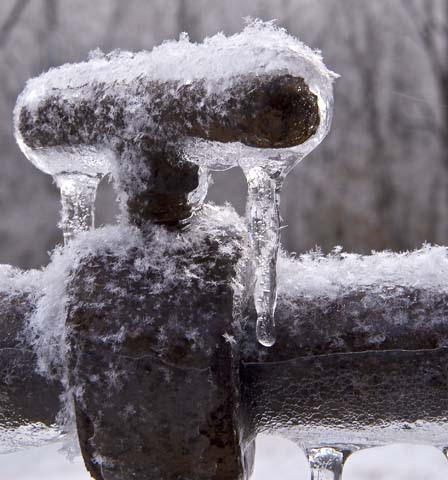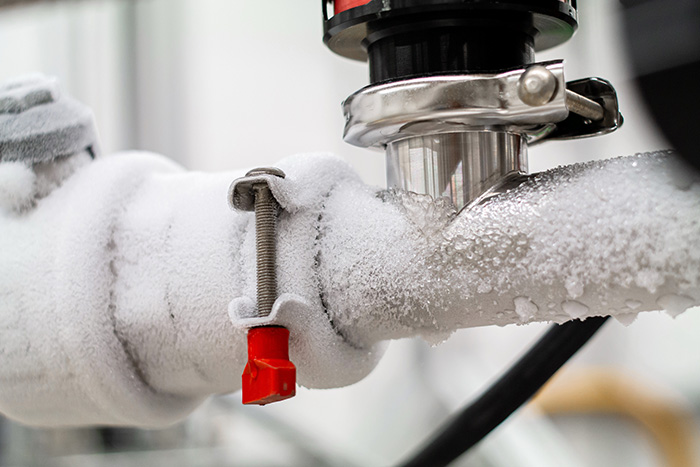The author is making a number of great annotation related to How To Avoid Freezing Pipes as a whole in this great article down the page.

Cold weather can damage your pipes, particularly by freezing pipelines. Below's just how to stop it from taking place and what to do if it does.
Introduction
As temperatures drop, the risk of frozen pipes increases, potentially causing costly repair work and water damage. Comprehending exactly how to avoid icy pipelines is essential for homeowners in cool climates.
Comprehending Frozen Pipelines
What causes pipes to freeze?
Pipes ice up when revealed to temperatures listed below 32 ° F (0 ° C) for prolonged durations. As water inside the pipelines ices up, it broadens, taxing the pipe wall surfaces and possibly causing them to burst.
Dangers and problems
Frozen pipes can lead to water disturbances, residential or commercial property damages, and costly fixings. Burst pipelines can flood homes and create substantial structural damages.
Signs of Frozen Pipeline
Identifying icy pipes early can avoid them from bursting.
How to determine frozen pipelines
Look for lowered water circulation from faucets, uncommon smells or noises from pipes, and visible frost on revealed pipelines.
Prevention Tips
Protecting at risk pipelines
Cover pipes in insulation sleeves or make use of warmth tape to secure them from freezing temperatures. Focus on pipelines in unheated or outside areas of the home.
Home heating methods
Keep interior rooms appropriately heated up, especially locations with plumbing. Open up cupboard doors to allow cozy air to circulate around pipes under sinks.
Shielding Outside Pipes
Garden hose pipes and outdoor taps
Disconnect and drain yard hose pipes before winter months. Set up frost-proof spigots or cover exterior faucets with insulated caps.
What to Do If Your Pipes Freeze
Immediate actions to take
If you presume icy pipes, keep taps open to ease stress as the ice thaws. Make use of a hairdryer or towels taken in warm water to thaw pipes gradually.
Long-Term Solutions
Structural adjustments
Think about rerouting pipes far from outside wall surfaces or unheated locations. Include extra insulation to attic rooms, basements, and crawl spaces.
Updating insulation
Invest in high-grade insulation for pipelines, attics, and walls. Correct insulation aids maintain constant temperature levels and minimizes the danger of frozen pipelines.
Conclusion
Protecting against frozen pipelines requires positive actions and quick feedbacks. By understanding the reasons, indicators, and preventive measures, home owners can protect their plumbing throughout winter.
5 Ways to Prevent Frozen Pipes
Drain Outdoor Faucets and Disconnect Hoses
First, close the shut-off valve that controls the flow of water in the pipe to your outdoor faucet. Then, head outside to disconnect and drain your hose and open the outdoor faucet to allow the water to completely drain out of the line. Turn off the faucet when done. Finally, head back to the shut-off valve and drain the remaining water inside the pipe into a bucket or container. Additionally, if you have a home irrigation system, you should consider hiring an expert to clear the system of water each year.
Insulate Pipes
One of the best and most cost-effective methods for preventing frozen water pipes is to wrap your pipes with insulation. This is especially important for areas in your home that aren’t exposed to heat, such as an attic. We suggest using foam sleeves, which can typically be found at your local hardware store.
Keep Heat Running at 65
Your pipes are located inside your walls, and the temperature there is much colder than the rest of the house. To prevent your pipes from freezing, The Insurance Information Institute suggests that you keep your home heated to at least 65 degrees, even when traveling. You may want to invest in smart devices that can keep an eye on the temperature in your home while you’re away.
Leave Water Dripping
Moving water — even a small trickle — can prevent ice from forming inside your pipes. When freezing temps are imminent, start a drip of water from all faucets that serve exposed pipes. Leaving a few faucets running will also help relieve pressure inside the pipes and help prevent a rupture if the water inside freezes.
Open Cupboard Doors
Warm your kitchen and bathroom pipes by opening cupboards and vanities. You should also leave your interior doors ajar to help warm air circulate evenly throughout your home.

We hope you liked our excerpt about Prevent Frozen Pipes . Thanks so much for taking the time to read our post. Appreciated our blog? Please share it. Help someone else locate it. I cherish reading our article about How to prepare your home plumbing for winter weather.
Schedule Here